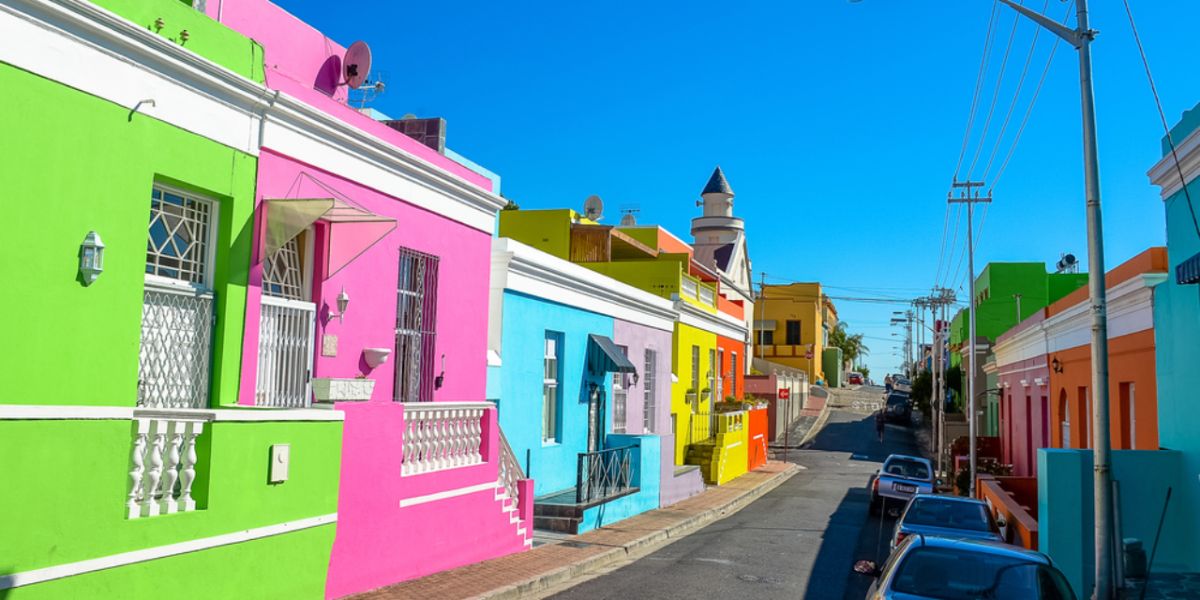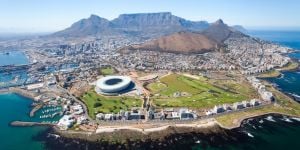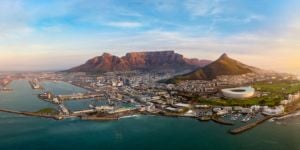
The legislative capital of South Africa and the Western Cape, Cape Town is the country's second-largest economy after Johannesburg. If you wish to settle in Cape Town, the choice of the place of residence will certainly be influenced by the place of work, the place of schooling of the children, by the financial means, but also by the advantages and disadvantages offered by the various districts of the city. Expat.com takes a look at the neighborhoods of Cape Town.
Cape Town areas
The metropolis of Cape Town is divided into six main areas as follows:
Atlantic Seaboard
Atlantic Seaboard, whose first district is the Victoria and Albert Waterfront, an old port rehabilitated into a shopping district. Then come Green Point, a very popular area for young professionals and the LGBT community of Cape Town, and Sea Point, which attracts many retirees where property prices are still reasonable. Then Clifton and Camps Bay and Llandudno, which are the most expensive suburbs of Cape town. Further south, Hout Bay, is a small seaside town. It is home to one of the Western Cape's largest fishing ports and is located on the scenic Chapman's Peak Drive. Property in Hout Bay is relatively affordable. The International School of Cape Town is located in Hout Bay. A MyCiti bus line serves this suburb from the city center.
Southern Suburb
Southern Suburb is the suburb located 15 km from the city center, on the slopes of Table Mountain. The University of Cape Town is located here, and the bohemian neighborhoods of Mowbray, Observatory and Rosebank attract many students. House prices in this area vary according to their proximity to the mountain. Newlands, Bishopscourt and Constancia are much more expensive than Rondebosch, Claremont and Kenilworth.
This suburb is popular with expatriates, retirees and young families as it has the best private English schools and the American school. It is home to the Table Mountain National Park with the Newlands Forest and the Kirstenbosch Botanical Gardens.
West Coast
West Coast is located north of the center of Cape Town. The main neighborhoods from the center are Milnerton, Tableview, West Beach, Bloubergstrand and Melkbosstrand, which overlook the coast, and the best surf spots are located there. This suburb, with its affordable real estate prices, attracts expatriate families and those who want to live close to nature. The natural sites of Milnerton Lagoon, Woodbridge Island and Rietvlei Nature Reserve are in this area. The major drawback of this area is the traffic jams for those who work in the city center, but a bus rapid transit line has been set up.
Northern Suburb
Northern Suburb comprises the neighborhoods of Century City, Parklands and Belleville along the Atlantic. These neighborhoods are relatively far from the city center, a thirty to forty-five-minute drive. Durbanville, Bellville, Goodwood and Parow have experienced tremendous real estate growth in recent years, but housing is still very affordable.
Southern Peninsula
The Southern Peninsula, where several areas of the peninsula were once small, picturesque villages that are now part of the Cape Town metropolis. The most populated areas are Muizenberg, Kalk Bay, Fishhoek and Simonstown. They are becoming more and more popular, especially among retirees, despite their distance from Cape Town.
City Centre
The City Centre, also called the City bowl, is surrounded on one side by the ocean and on the other by Table Mountain and Signal Hill. It is composed of the CBD (Central Business District) and several residential areas. There are both small houses and apartment buildings, and the downtown areas all have very different characteristics. Devil's Peak and Vredehoek are very green neighborhoods. Gardens, where the French high school is located, is a mix of small houses, villas and buildings, and is very popular with expatriates. Bo-Kaap is now a yuppie neighborhood, and Woodstock, a little out of the way, is being rehabilitated.
Bo-Kaap, located on a hill in the southwest of the city, is famous for its picturesque streets with colorful houses. Woodstock, a former warehouse district, had a very bad reputation in terms of security a few years ago. It is now the district of the artists. Property is still affordable here, but prices tend to increase. Observatory, a bohemian district in the process of being rehabilitated, is very popular with young hipsters for the very good quality/price ratio of property.
Places to avoid in Cape Town
Nyanga, which is classified as one of the most dangerous neighborhoods in the world, and Khayelitsha, which is the second largest township in South Africa after Soweto, are areas to avoid.
Living in Cape Town poses the major question of insecurity, and even if this one tends to increase, it remains, nevertheless, especially limited to the townships. As everywhere else, it is necessary to be vigilant and respect the elementary rules of security.
Useful link:
We do our best to provide accurate and up to date information. However, if you have noticed any inaccuracies in this article, please let us know in the comments section below.








